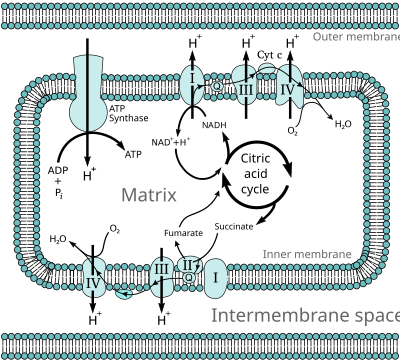here is some of my results.
lung volume
breathing rate
before exercise- 330
after exercise- 350
before the game round 1- 350
after the game round 1- 370
before the game roung 2- 360
after the game round 2- 380
franco effects of exercise
Monday 18 June 2012
Wednesday 23 May 2012
Aerobic glycolysis
The conversion of glucose to lactate in the presence of oxygen has been termed aerobic glycolysis.
2atp are produced from aerobic glycolysis.

2atp are produced from aerobic glycolysis.

kreb cycle
The Krebs cycle, also known as the tricarboxylic acid cycle.
the kreb cycle is chemical reachtion that produces carbon dioxide and Adenosine triphosphate.
2atp are produced from the kreb cycle.

the kreb cycle is chemical reachtion that produces carbon dioxide and Adenosine triphosphate.
2atp are produced from the kreb cycle.

Monday 21 May 2012
Electron transport chain
stage 3
when you breath you can see the steam on a cold day and that is the co2 you are seeing.
34 atp are produced from electron transport chain.

34 atp are produced from electron transport chain.

Wednesday 16 May 2012
ATP System
After 10 seconds of exercise your atp systyem run out and it will make it harder to exercise and you will have to depend on another system. The glucogen is stored in the muscles like sugar and it restores back your atp system so that you can use it for another 10 seconds and this is called glycolysis. Latic acid build up while you are exercising and that will make you have 40 to 60 seconds of exercise left.
 Atp brakes down to make adp and releases energy into our muscles.
Atp brakes down to make adp and releases energy into our muscles.

lacitc acid system
lactic acid system is what make your muscles hurt when you exercise and it take place in the muscles more stores of glycogen than pc so lasts longer about 14-15 seconds and no o2 needed so no delay will not happen. It burns you and slows you down and only 5 per cent of the number of ATPs that are produced by the aerobic system, yet more than the ATP/PC system. The lactic acid system is an important energy system because it provides a very quick supply of ATP for intense, short bursts of activity. this are a few sport that use this system is 100m sprint and weight lifting and long jump
Wednesday 2 May 2012
long term effects of exercise
Regular exercise results in adaptations to the circulatory, respiratory and muscular systems in order to help them perform better under additional stress. Here are the changes which must take place within the muscles, respiratory system and circulatory system.so the more you exercise the stronger and thicker your heart get and your heart will be able to do four pump in one and that mean that your heart rate will decrease.
when you exercise your breating rate will go down because your lungs can hold more oxygen into your heart so then your heart beats faster and thats why your heart rate goes up and down. the number of red blood cells increases, improving the bodies ability to transport Oxygen to the muscles. The cardiac muscle surrounding the heart hypertrophies, resulting in thicker, stronger walls and therefore increases in heart volumes. The more blood pumped around the body per minute, the faster Oxygen is delivered to the working muscles. the longer you train your mucsle round your heart get stronger to pump more in one pump and your heart rate will decrease. if you train for longer your bones will get thicker and be harder to break and also the liquid surronding the bone will get thicker so it will be impact resitant e.g. like punching your fist togerther it will hurt but when you do it with boxing gloves on it wont hurt.

when you exercise your breating rate will go down because your lungs can hold more oxygen into your heart so then your heart beats faster and thats why your heart rate goes up and down. the number of red blood cells increases, improving the bodies ability to transport Oxygen to the muscles. The cardiac muscle surrounding the heart hypertrophies, resulting in thicker, stronger walls and therefore increases in heart volumes. The more blood pumped around the body per minute, the faster Oxygen is delivered to the working muscles. the longer you train your mucsle round your heart get stronger to pump more in one pump and your heart rate will decrease. if you train for longer your bones will get thicker and be harder to break and also the liquid surronding the bone will get thicker so it will be impact resitant e.g. like punching your fist togerther it will hurt but when you do it with boxing gloves on it wont hurt.

Subscribe to:
Posts (Atom)
